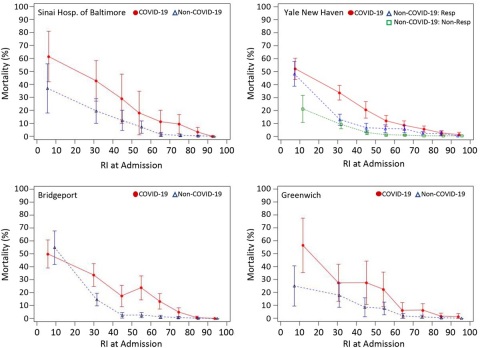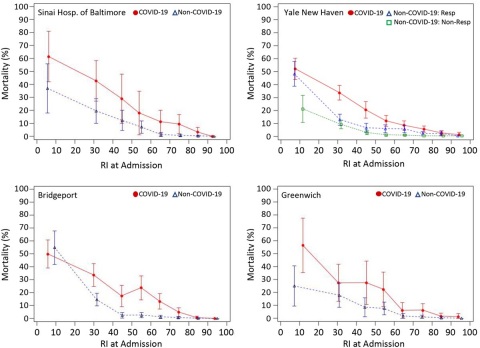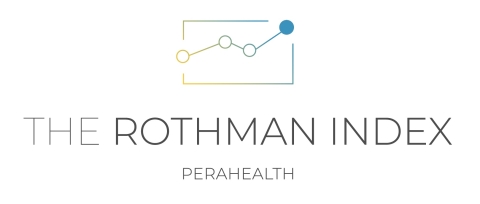CHARLOTTE, N.C.--(BUSINESS WIRE)--The journal, Critical Care Explorations, has published findings based on work from a collaborative of researchers from Yale New Haven Health (YNHHS), LifeBridge Health’s Sinai Hospital of Baltimore, and PeraHealth, Inc (Charlotte, NC), that offers important insights into patient care for both COVID-19 and non-COVID-19 patients. The analyses use the Rothman Index, a well-validated measure of patient acuity. A comparison of COVID-19 and non-COVID-19 patients shows that COVID patients are at “high risk” at significantly lower acuities than non-COVID-19 patients. COVID-19 patients, whose condition does not appear to be “worrisome” may in fact be at high risk for subsequent deterioration. The research also identifies “low risk” COVID-19 patients who may benefit from early hospital discharge.
The Rothman Index, developed by PeraHealth, is the only proven algorithm that automatically derives one simple score from the vast amount of data in the electronic health record to create a picture of any patient’s condition over time – any age, any disease, any care setting. Because the data feeding the Rothman Index reflects the real-time status of multiple body systems, it captures subtle changes in patient condition, often hours or days earlier than existing vitals-based warning systems.
The new publication titled, Stratifying Deterioration Risk by Acuity at Admission Offers Triage Insights for Coronavirus Disease 2019 Patients, detailed a retrospective study that outlines a new way to think about patient triage at hospital admission. The study analyzed data from 18,157 patients across four hospitals in Connecticut and Maryland and demonstrated the predictive correlation of the Rothman Index score to a patient’s subsequent need for ICU level care or risk of in-hospital death.
“It can be difficult for clinicians to make confident decisions around patient placement, especially in the current high-stress pandemic environment. Our work may help disambiguate data and provide a direction,” said PeraHealth Founder and Chief Science Officer, Michael Rothman, PhD. “This publication highlights the importance of research with our hospital partners and how their relentless focus on innovation can improve patient outcomes.”
The publication in Critical Care Explorations journal can be viewed here: Stratifying Deterioration Risk by Acuity at Admission Offers Triage Insights for Coronavirus Disease 2019 Patients
To hear more from the PeraHealth research team, consider viewing the recent webinar, “How to Identify High Risk COVID-19 Patients upon Hospital Admission.”
About PeraHealth
PeraHealth is a SaaS software company that uses the Rothman Index to transform the clinical and financial efficiency of healthcare. The Rothman Index is the first algorithm that derives a universal patient scoreTM from the vast amount of data in the electronic medical record to create a picture of any patient’s condition over time – any age, any disease, any care setting. It is the only algorithm proven to reduce mortality in practice. Other results include reducing length of stay and readmissions. Our customers are leading hospitals and clinicians who need to identify patients at risk of rapid decline, make decisions about transfer and discharge, predict the risk of severe infection, and improve the overall efficiency and quality of care. For more information, visit www.perahealth.com and @perahealth.




